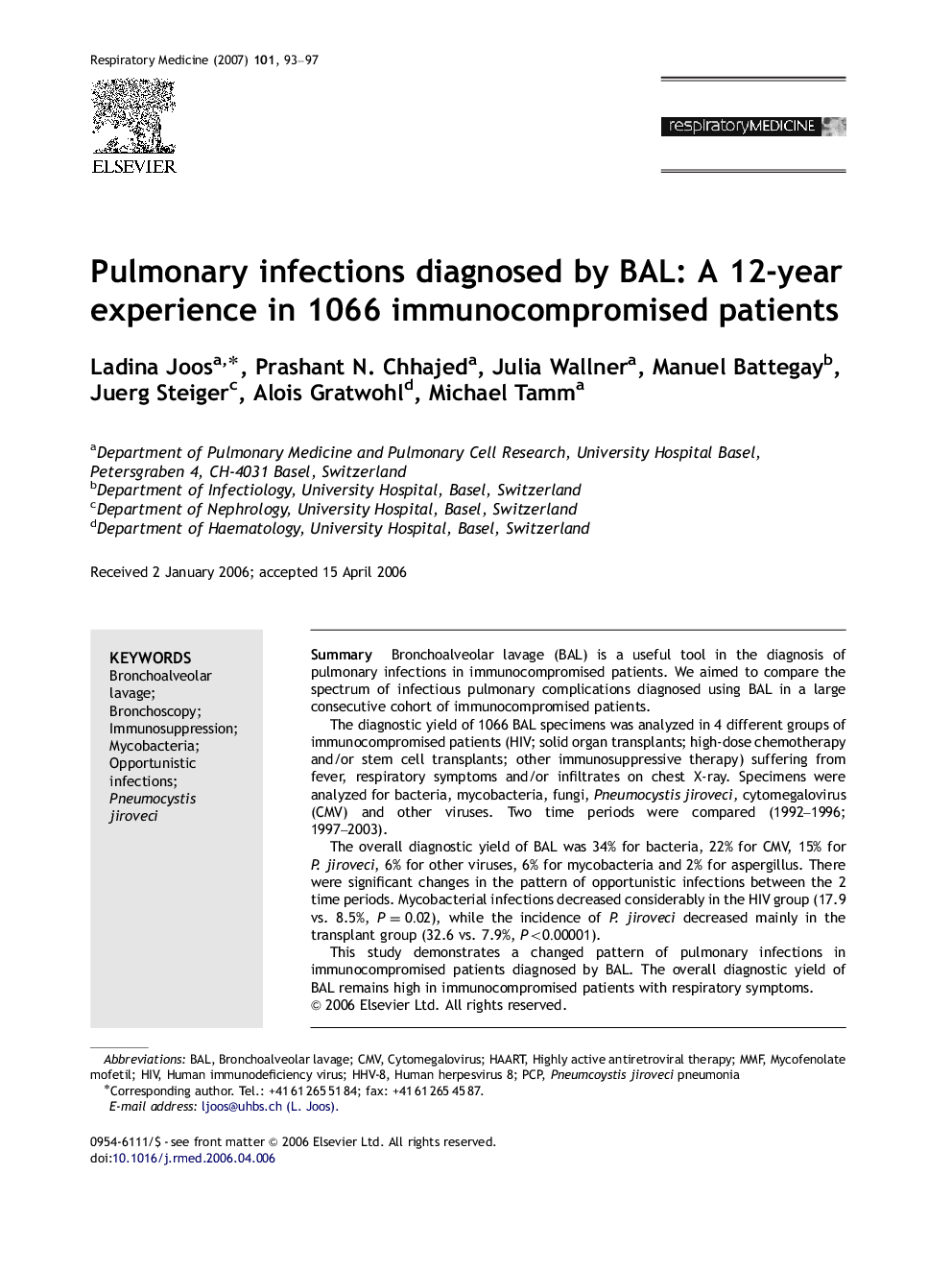| Article ID | Journal | Published Year | Pages | File Type |
|---|---|---|---|---|
| 4212013 | Respiratory Medicine | 2007 | 5 Pages |
SummaryBronchoalveolar lavage (BAL) is a useful tool in the diagnosis of pulmonary infections in immunocompromised patients. We aimed to compare the spectrum of infectious pulmonary complications diagnosed using BAL in a large consecutive cohort of immunocompromised patients.The diagnostic yield of 1066 BAL specimens was analyzed in 4 different groups of immunocompromised patients (HIV; solid organ transplants; high-dose chemotherapy and/or stem cell transplants; other immunosuppressive therapy) suffering from fever, respiratory symptoms and/or infiltrates on chest X-ray. Specimens were analyzed for bacteria, mycobacteria, fungi, Pneumocystis jiroveci, cytomegalovirus (CMV) and other viruses. Two time periods were compared (1992–1996; 1997–2003).The overall diagnostic yield of BAL was 34% for bacteria, 22% for CMV, 15% for P. jiroveci , 6% for other viruses, 6% for mycobacteria and 2% for aspergillus. There were significant changes in the pattern of opportunistic infections between the 2 time periods. Mycobacterial infections decreased considerably in the HIV group (17.9 vs. 8.5%, P=0.02P=0.02), while the incidence of P. jiroveci decreased mainly in the transplant group (32.6 vs. 7.9%, P<0.00001P<0.00001).This study demonstrates a changed pattern of pulmonary infections in immunocompromised patients diagnosed by BAL. The overall diagnostic yield of BAL remains high in immunocompromised patients with respiratory symptoms.
